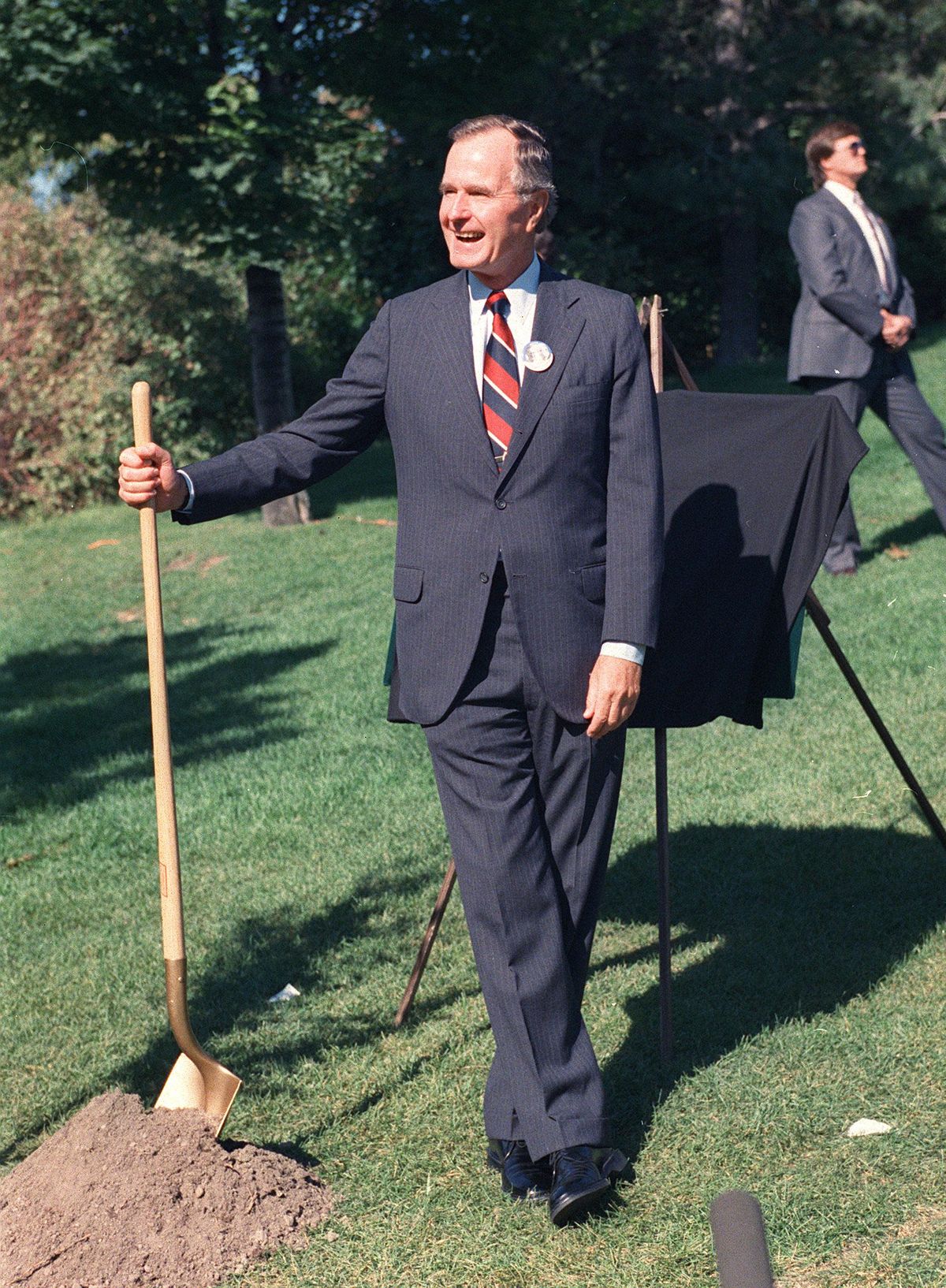Spokane’s ‘Bush elm’ had a difficult life

After President George H.W. Bush planted an elm sapling in Riverfront Park in 1989, life in its new home wasn’t easy.
Accompanied by then-Speaker Tom Foley, Bush helped plant the young elm – which he had brought with him from Washington, D.C. – in Riverfront Park as part of a celebration of Washington state’s centennial. A mention of the visit in Saturday’s Spokesman-Review as part of a story about the late president’s trips to Spokane prompted questions from readers:
What happened to the tree? Where can we find it?
The sapling came from an American elm planted by President John Quincy Adams on the White House grounds more than 150 years earlier. The hole near the Centennial Trail in Riverfront Park was pre-dug, so Bush and Foley shoveled some dirt into it and park staff did the rest.
The story of the tree and other events from that visit were recounted in a Spin Control Files column on the 25th anniversary of the ceremony. The tree didn’t last that long, however.
A couple days after the ceremony, vandals ripped off some of the branches. Park staff didn’t know if these were run-of-the-mill vandals or someone with a political beef with Bush or Foley. Police investigated and a reward was offered, but the culprit or culprits were never found.
The department wasn’t taking chances. Staff splinted and trimmed the tree to its few remaining good branches and secretly moved it to the Finch Arboretum, where it was planted in an area with some dogwoods. There was talk of moving it back to Riverfront Park at some point if it grew to a size where it wasn’t so vulnerable, and the White House offered a replacement if it didn’t survive in its new location.
The tree wasn’t marked with any sign or plaque to note its significance, and for years the Parks Department wouldn’t confirm its location. It did survive, but the competition for sunlight along with the vandalism meant it grew into an odd shape. In 2007, the department decided to move it to a section in the arboretum with elms.
That move was its last. The Bush elm was planted too shallowly and couldn’t compete for water with the root systems of nearby pines and maples. It died that year, and was cut down.